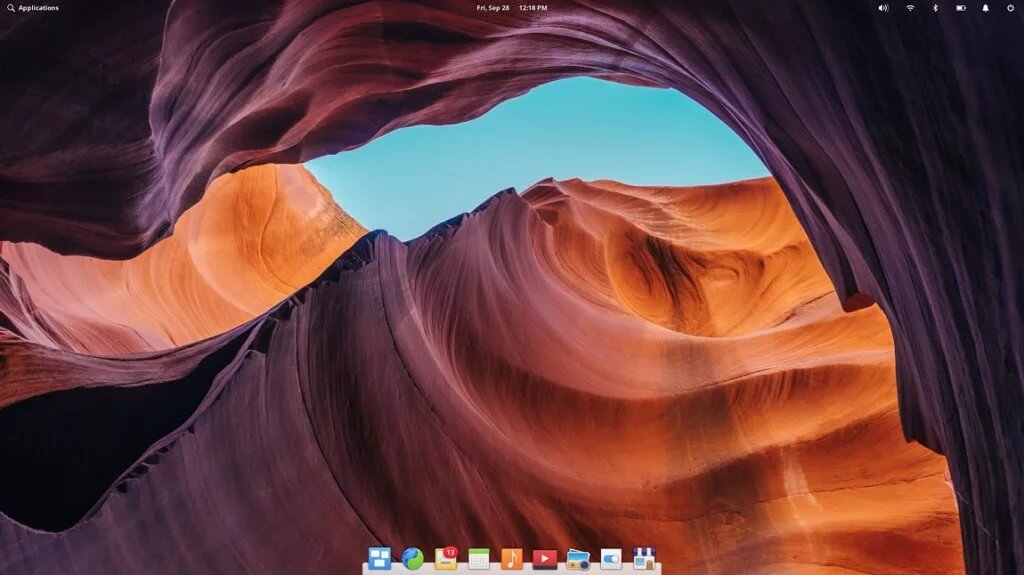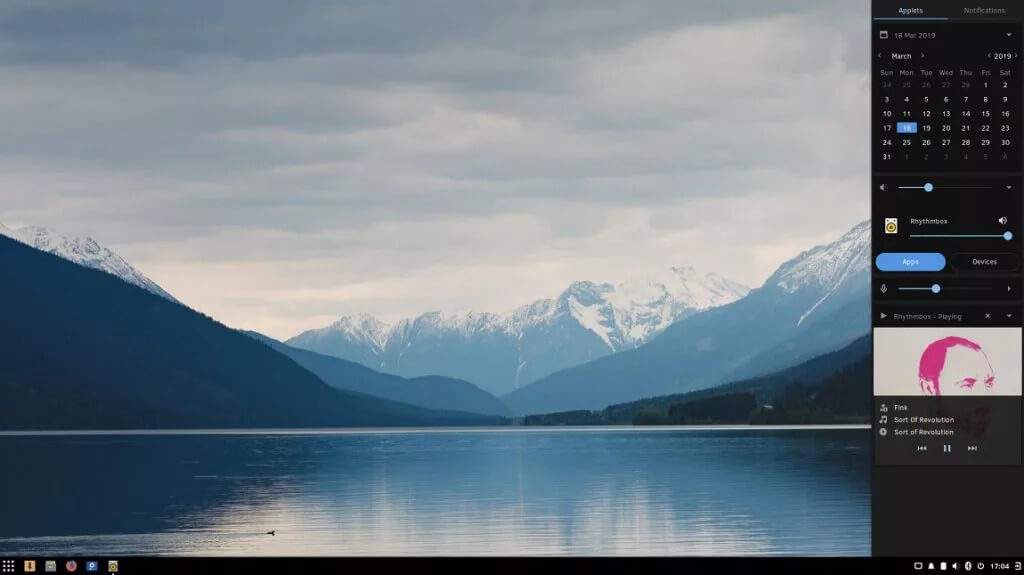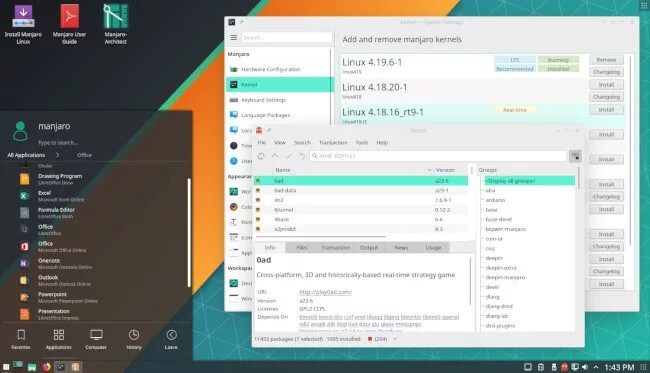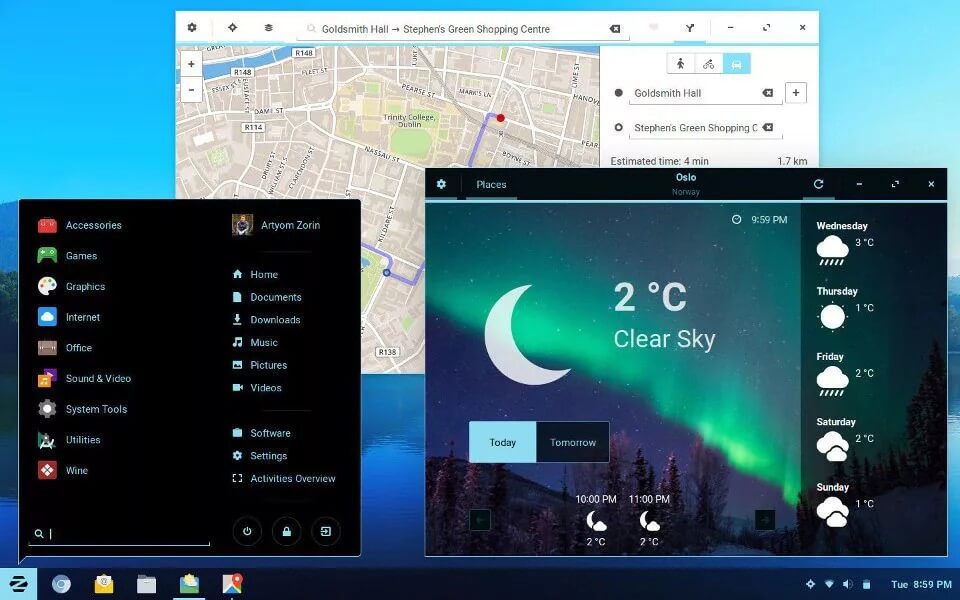今日推荐开源项目:《从搞事情开始 project-based-learning》
今日推荐英文原文:《Best Linux Distros for Beginners》

今日推荐开源项目:《从搞事情开始 project-based-learning》传送门:GitHub链接
推荐理由:一个各种语言的教程合集,只不过大部分都是介绍如何动手制造一些东西的。当有了一些语言方面的基础之后,要想了解更多关于这个语言的知识的话除了通读教程还有一种方法就是动手制作了。最开始可能需要寻找各种教程和示例——总而言之就是学习已有的经验来了解这个语言在制作时需要用到的功能,但是随着熟练度的增加你就可以很轻松的记下它们,这个时候就不再需要教程了,这些知识已经成为了你自己的东西。不过要注意的是如果一开始就专心于应用而没有打好语言基础的话,反而会拖慢学习进度。
今日推荐英文原文:《Best Linux Distros for Beginners》作者:Adrian Uzoni
原文链接:https://thishosting.rocks/best-linux-distros-beginners/
推荐理由:推荐给初学者的 Linux 发行版
Best Linux Distros for Beginners
So, you heard about Linux so many times but never had the guts to finally commit to the change cause of those scary stories that you heard on how complex setting up Linux is, and the choice of the Linux distribution in the first place? Well, you shouldn’t worry about that anymore because we got you covered.Firstly, let’s cover some basic terms.
What is Linux and what are “Distros”?
Just like Windows and Mac OS X, Linux is an operating system, and not just a simple one, it’s the most secure, stable, open-source operating system there is, and the best part is it’s completely free.Linux comes in different “flavors” named “distros”, each with different features and characteristics. For example, there are specialized Linux distros like distros for gaming, distros for programming and lightweight distros for old PCs. Some of the other types of distros are:
- Privacy-oriented distros like Tails
- Hacking distros like Kali
- Audio/Video production distros like Ubuntu Studio
- And many more.
7 best Linux distros for beginners
We will keep it simple and cover the best beginner-friendly Linux distros. We will begin with distros for those coming from Windows or MacOS, distros that are lightweight, optimized and run well even on an older machine, and perfect as daily drivers.1. Linux Mint

First on the list is Linux Mint, which was designed for ease of use and a ready-to-run out-of-the-box experience. Anyone that switches from Windows will find this distro very intuitive and will feel right at home. The installation itself is easier than most Linux distributions, and it comes with all the required software to get you up to speed. Another thing, unlike most Linux distributions, Mint includes proprietary third-party browser plugins, Java, media codecs etc. There are different desktop editions of Mint including Cinnamon, MATE, and Xfce. Cinnamon represents the most modern, innovative and full-featured desktop with all the bells and whistles, it’s slick and beautiful. MATE is based on a classic desktop environment and its main feature is stability. And finally, Xfce is the most lightweight edition, and will run comfortably on any configuration, old or new. Best Linux Mint edition? There’s no right or wrong, simply put it’s the one that fits your requirements best.
2. Ubuntu

Next in line is Ubuntu, and chances are, if you ever searched Linux on the Internet, you have surely come across this one. Ubuntu is surely amongst the best Linux distros out there, since originally it was the first Linux OS distribution designed with the aim of simplifying Linux and offering it to the general public. Installing Ubuntu is a breeze and it also comes with all the functionality you need out-of-the-box. It features a Software Center, so finding and installing applications is effortless. Being the most popular Linux Distro, it has the biggest ever-expanding community, with regular updates ensuring that your system is always secure and up-to-date. It’s the most widely used distro out there, both for servers and desktops.
There’s a comparison of Linux Mint and Ubuntu here.
3. Elementary OS

Elementary OS is one of the, if not THE best looking Linux distro. It features many custom apps including Photos, Music, Videos, Calendar, Terminal, Files and a custom desktop environment called Pantheon which I’m sure that users who come from macOS will know to appreciate. It’s based on Ubuntu so it comes with all the known benefits, from easy and fast installation to an Appcenter for quick setup. It’s a fairly light and stable distro which makes it run on almost anything. Regular updates are ensured, so your system will run like a dream.
4. Peppermint

Another great lightweight distro is Peppermint. It’s a stable, cloud-oriented distribution based on Ubuntu. What makes this distro special is it’s unique desktop environment which is kind of a hybrid of LXDE and Xfce, it resembles Windows UI, so again, it’s great for those switching from Windows. Another strong point of this distro is its ability to be easily integrated with web apps, through its Ice application. All in all, I would definitely recommend trying this distro, especially cause of its extremely low system requirements, and quite simple UI.
5. Solus

Moving right along, we have Solus OS and this one is a little bit special. It’s a completely new, and beautiful Linux OS that isn’t based on anything. It’s kind of a fresh start, and this is not a bad thing at all. Everything is built in-house and it comes in 3 flavors, from the fully featured Budgie edition, to the more familiar Gnome version, and finally to the most lightweight MATE version, so you definitely have something to choose from. It’s a simple rock solid OS, updated frequently, so if you are tired of those Ubuntu-based distros and want to try something new, this is the one.
Now, to cover the needs of those of you that want to slap a fully-fledged OS on your bleeding-edge hardware in order to get some work done, but also some fun gaming sessions we recommend:
6. Manjaro Linux

Manjaro Linux is a distro that recently has gained popularity and with good reasons. It’s a fast, beautiful, user-friendly, desktop-oriented Linux OS distribution. It features a user-friendly installer, and it comes with everything you need pre-installed. The highlight of Manjaro is its amazing hardware support, thanks to its hardware detection manager, so you won’t need to worry about installing additional drivers. And if you find yourself stuck with a problem and looking for support, Manjaro has a great community ready to help you out. Some may argue that Manjaro should not be used by beginners, so beware, though everything can be done via the GUI and it’s a super-powerful and great looking distro.
7. Zorin OS

Another Linux distro which helps Windows refugees is Zorin OS. It’s an Ubuntu-based well designed and polished distribution. Without a doubt, its desktop environment resembles the all familiar Windows desktop, ensuring an effortless transition into the Linux world. Of course, it comes with a huge list of preinstalled software. Another highlight is the amazing theme engine called ‘Zorin look changer’ which offers high customization options and finally, it comes with Wine and PlayOnLinux so you can run most of your beloved Windows apps and games here too.
Honorable Mentions
A quick list of a few more distros so you can continue your research and explore more Linux distros:- KDE Neon
- Deepin
- Fedora
- MX Linux
- PCLinuxOS
- Linux Lite
- Kubuntu, Xubuntu, Lubuntu, Ubuntu Mate, Ubuntu Budgie, and most other Ubuntu derivatives
- This is a great guide with more examples
How to choose the best Linux distro if you’re a beginner
Here are a few quick and simple guidelines to help you choose the best distro for you:- If you’re feeling overwhelmed, just choose the distro that looks best to you. You can install most of the software on any distro of your choosing, as long as it’s compatible. All the distros we featured in our article can run pretty much the same pre-installed apps. Even if an app is not pre-installed in the distro you’re looking at, it’s pretty easy to find and install it using the distro’s Software/App center. It’s all done via the GUI.
- If you’re moving away from Windows or Mac and want to keep using a similar interface, then choose one of the distros that specialize in that, like Peppermint, Linux Mint, Zorin, Elementary etc.
- Don’t start with a distro like Arch Linux. Although a true powerhouse and a great distro, it’s not really recommended for beginners. Though, if you want to really learn Linux and how everything works, it’s a great starting distro. Either way, I wouldn’t recommend it as your main OS if you’re a beginner.
- You can always dual-boot, run a virtual machine, or try a distro via a live USB. So you can keep using Windows/Mac, but switch to a Linux distro anytime. Dual-booting would be best if you don’t want to quit your main OS cold turkey.
- Quickly go through the distro’s website to learn more about the distro before using it. This way you’ll know if it actually meets your needs beforehand, instead of using it and reinstalling a different distro afterward.
Frequently Asked Questions about Linux distros for beginners
If you’re a beginner, it’s understandable that you’ll have a lot of questions about Linux distros and Linux in general. We’ll try to cover some of them here, but you can always google anything.What are standard and rolling release cycles?
Linux distros tend to use two types of release cycles: standard releases and rolling releases. Some people prefer the concept on standard release since updates come less frequently and generally, the software tends to be more stable since it’s well tested, while others opt out for rolling releases which means frequent update delivery. So if you like stability and “peace of mind”, go with a standard release cycle. If you like the latest software and drivers, go with a rolling release cycle.Is everything in Linux done via the command line interface?
No. That’s a common misconception. You can do pretty much everything via a GUI. Some tutorials you find online may have instructions only for the Terminal (CLI), but you can find an alternative tutorial that uses a GUI tool.Can I run Linux on my PC/hardware?
Chances are, yes, you can. It’s best if you check the distro’s requirements, but most Linux distros are well-optimized and don’t need powerful hardware, especially the lightweight ones.How to install a distro?
You’ll need to check the distro’s official site or google a tutorial. But basically, you need a USB flash drive/CD drive, you need an ISO image, and a tool to burn the iso image to the (bootable) drive. There are a number of tools that do this in a couple of clicks. Some even download the ISO for you. Once you have the drive ready, you just boot your system into the drive and follow the easy on-screen steps.Should I use an antivirus on my Linux distro?
Depends. In most cases – not really. You should still follow security principles and have common sense when it comes to downloading files, running scripts etc.What distro should I use for my server?
Either CentOS or Ubuntu, depending on the requirements of the software you’re planning on hosting.下载开源日报APP:https://openingsource.org/2579/
加入我们:https://openingsource.org/about/join/
关注我们:https://openingsource.org/about/love/
